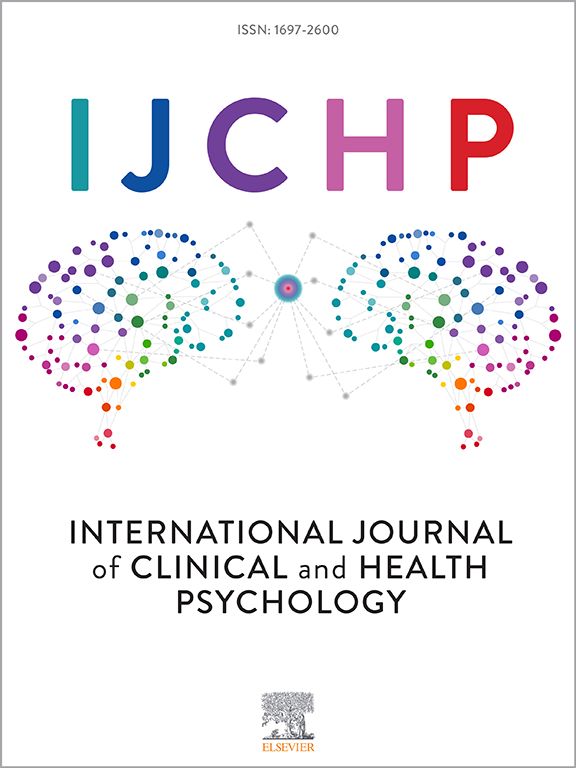重度抑郁发作季节性易感性的睡眠生物标志物:一项使用活动描记和多导睡眠描记仪的临床研究
IF 4.4
1区 心理学
Q1 PSYCHOLOGY, CLINICAL
International Journal of Clinical and Health Psychology
Pub Date : 2025-04-01
DOI:10.1016/j.ijchp.2025.100595
引用次数: 0
摘要
冬季季节性模式的季节性情感障碍或重性抑郁发作(MDE)是一种严重形式的复发性抑郁症,持续时间至少为一年的40%。这种季节性脆弱性可能涉及特定的时间生物学和睡眠调节障碍,然而,活动描记和多导睡眠描记研究报告了相互矛盾和不确定的结果。在这种情况下,我们假设MDE患者对季节变化表现出更高的脆弱性,表现出明显的时间生物学和睡眠调节障碍。我们通过主观标记物(N = 254)、客观活动图(N = 96)和多道睡眠图标记物(N = 54)评估了MDE患者的睡眠和昼夜节律如何根据他们对季节变化的易感性而变化。为了实施这种可能更接近病理生理学的维度方法,我们使用来自季节模式评估问卷(SPAQ)的全球季节性评分(GSS)来评估季节性脆弱性。结果显示,季节性脆弱性越大,白天过度嗜睡增加(Epworth量表),(r = 0.218, p <;0.001),更短的快速眼动睡眠潜伏期(r = -0.381, p = 0.005),(即使使用Kupfer指数控制年龄(r = -0.452, p <;0.001)), N1睡眠潜伏期较短(r = -0.411, p = 0.002)。回归模型仅保留了与GSS独立且显著相关的多导睡眠图标记- n1睡眠潜伏期、REM睡眠潜伏期、Kupfer指数。这项研究证实了季节性易感性与快速眼动睡眠潜伏期缩短之间的联系,强调光和光周期在调节抑郁症快速眼动睡眠失调的系统中起着关键作用。本文章由计算机程序翻译,如有差异,请以英文原文为准。
Sleep biomarkers of seasonal vulnerability in major depressive episodes: a clinical study using actigraphy and polysomnography
Seasonal affective disorder or major depressive episode (MDE) with winter seasonal pattern is a severe form of recurrent depressive disorder persisting for at least 40 % of the year. This seasonal vulnerability may involve specific chronobiological and sleep regulation disturbances, however, actigraphy and polysomnography studies reported conflicting and inconclusive findings. In this context, we hypothesized that individuals with MDE who exhibit higher vulnerability to seasonal changes display distinct chronobiological and sleep regulation disturbances. We investigated how sleep and circadian rhythms, assessed through subjective markers (N = 254) and objective actigraphic (N = 96) and polysomnographic markers (N = 54)—varied in individuals with MDE according to their vulnerability to seasonal changes. To conduct this dimensional approach, that may be closer to the pathophysiology, we assessed the seasonal vulnerability using the Global Seasonality Score (GSS) from the Seasonal Patterns Assessment Questionnaire (SPAQ). The results revealed that greater seasonal vulnerability was correlated to increased excessive daytime sleepiness (Epworth scale), (r = 0.218, p < 0.001), shorter REM sleep latency (r = -0.381, p = 0.005), (even when controlling for age using the Kupfer index (r = -0.452, p < 0.001)), and shorter N1 sleep latency (r = -0.411, p = 0.002). The regression model retained only the polysomnographic markers—N1 sleep latency, REM sleep latency, Kupfer Index—independently and significantly associated to the GSS. This study confirms a link between seasonal vulnerability and shortened REM sleep latency, emphasizing that light and the photoperiod play a pivotal role in regulating the systems involved in REM sleep dysregulation in depressive disorders.
求助全文
通过发布文献求助,成功后即可免费获取论文全文。
去求助
来源期刊

International Journal of Clinical and Health Psychology
PSYCHOLOGY, CLINICAL-
CiteScore
10.70
自引率
5.70%
发文量
38
审稿时长
33 days
期刊介绍:
The International Journal of Clinical and Health Psychology is dedicated to publishing manuscripts with a strong emphasis on both basic and applied research, encompassing experimental, clinical, and theoretical contributions that advance the fields of Clinical and Health Psychology. With a focus on four core domains—clinical psychology and psychotherapy, psychopathology, health psychology, and clinical neurosciences—the IJCHP seeks to provide a comprehensive platform for scholarly discourse and innovation. The journal accepts Original Articles (empirical studies) and Review Articles. Manuscripts submitted to IJCHP should be original and not previously published or under consideration elsewhere. All signing authors must unanimously agree on the submitted version of the manuscript. By submitting their work, authors agree to transfer their copyrights to the Journal for the duration of the editorial process.
 求助内容:
求助内容: 应助结果提醒方式:
应助结果提醒方式:


